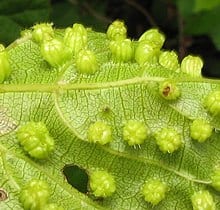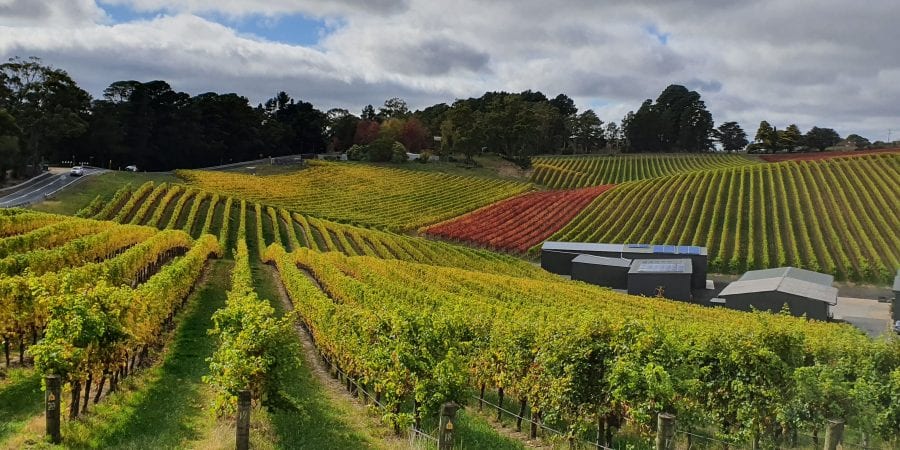Yep… so, I finally settled on “Vine” Jargon. Welcome to Part 2!
Degrees Baume
You’re going to hear this one pop up a bit. And if you’re not already familiar with it, you probably should be.
Degrees Baumé (expressed as oBé) is the unit used to report the amount of sugar in both the grapes pre-harvest and the wine during fermentation.
Prior to harvest, representative samples of the berries are collected regularly and crushed to release the juice. The juice is then tested in the lab to determine the sugar content in that sample. Not only does this give the viticulturalist and/or winemaker a pretty good idea of when to pick the grapes it also gives a convenient prediction of the potential alcohol content of the wine produced from those grapes. The general rule is that 1oBé is equivalent to 1% alcohol. For example, grape juice with 13 oBé will, if fermented completely, produce a wine of about 13% alcohol by volume.
At the other end of the winemaking process, the ferment is tested daily so that the winemaker can observe the rate of fermentation. At the very beginning of the fermentation process, the Baumé will be equivalent to the final Baumé of the grapes when they were picked (so, 13 oBé in the example above). As the fermentation progresses, the amount of sugar decreases as the alcohol increases. The final Baumé of a dry wine should be as close to zero as possible.
Growing conditions
Microclimate
Climate is obviously very important when it comes to choosing which variety of grape to grow and is key to growing them well.
But, believe it or not, there are three different types of climate that matter in the vineyard.
- Regional climate (or macroclimate): this is the climate of a large area, such as region or a country (you may hear terms like Mediterranean climate, martime climate, etc.)
- Site climate (or mesoclimate): this is a climate in a specific site within a region.
- Microclimate: the climatic conditions within the vineyard canopy. In the immediate vicinity of leaves ad bunches.
While the first two are mostly up to nature, viticulturalists have some control over microclimate. Last week I touched on “canopy management” – pruning, trimming and using trellis systems to modify the amount of sunshine and air movement around the bunches.
The right microclimate enhances the biological activity of leaves and fruit and adds to the desired grape composition. Grapes from open canopies, as a rule, have improved sugar/acid balance, increased grape colour and more desirable primary fruit characters.
Here is a good example (thanks to “Australian Wine – from the vine to the glass”, by Patrick Illand and Peter Gago)…
Some wines from made from Cabernet Sauvignon can have dominant capsicum-like aromas and flavours. This is a feature originating in the grapes and is usually associated with grapes coming from cooler growing conditions and/or shaded canopies. The intensity of this character in the grapes can be decreased by changing the trellis system so that leaves and bunches are more exposed to light.
Terroir
I could probably dedicate an entire post to this one!
Technically, there isn’t a direct translation for the French word “Terroir” in English. The root of the word, terre, means ‘earth’ in French, and while this is related to terroir, it means much more than just land. Terroir – in just one word! – refers to all of the natural conditions that make a specific place unique. This includes:
- climate
- weather and wind patterns
- soil
- precipitation
- surrounding geographical conditions (i.e. proximity to rivers, lakes oceans or other bodies of water, surrounding flora)
- altitude and situation on hillsides, slopes or mountains
- temperature
- sunlight
There is a bit of controversy around the term. Some people insist that terroir has a significant effect on wine. While others suggest that the role of the winemaker has more impact on the end product. No doubt, the answer is probably somewhere in the middle.
(see what I did there? not getting involved in that argument!)
Pests
We’ve talked about vineyard pests and diseases before. You can catch up on all the important ones including, powdery mildew, downy mildew, botrytis, mealybug and light brown apple moth in this post from earlier in the year.
Here is one I didn’t include though (for some strange reason). And it’s possibly the most significant one for the wine industry…
Phylloxera
 Phylloxera is a very small, yellow aphid that feeds on the roots (and sometimes leaves) of grapevines. It can also move to the soil surface and up into the canopy and the fruit.
Phylloxera is a very small, yellow aphid that feeds on the roots (and sometimes leaves) of grapevines. It can also move to the soil surface and up into the canopy and the fruit.
This pest attacks the roots, which eventually decay, causing the vine to die. In areas where phylloxera is present in the soil, vines must be grafted onto resistant rootstocks before they are planted (we touched on this last week).
Phylloxera is present in most countries. It destroyed the vineyards of Europe in the late 1800s and in more recent times it has ravaged vineyards in California. Phylloxera was found in Australia in the 1880s and destroyed many of the vineyards of Victoria during the late 1800s and early 1900s
In Australia Phylloxera is currently confined to regions in Victoria and New South Wales. Thanks to strict quarantine regulations, South Australia, Western Australia, Northern Territory and Tasmania are designated ‘Phylloxera-free’. That said it remains, to this day, one of the greatest biosecurity threats to vineyards.
Have any other vineyard-related terms been getting you confused??
Let me know and I’ll have a go at explaining them!
